The much-travelled artist Ford Madox Brown was a one-time resident of Victoria Park. Two of his most famous paintings, Work and The Last of England, are in Manchester City Art Gallery. Ford Madox Brown also painted the 12 large murals in Manchester Town Hall. The Herculean task took the artist 15 years to complete.
An illustration and text about The Ford Madox Brown.
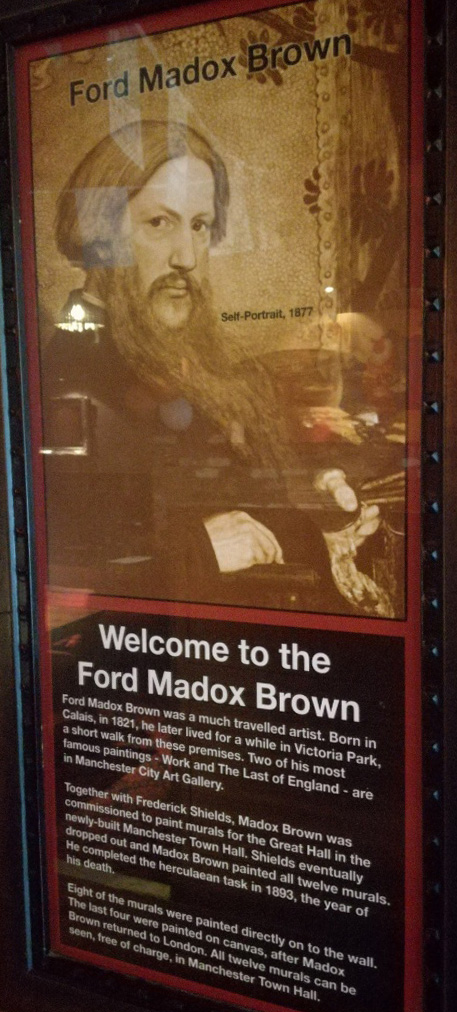
The text reads: Ford Madox Brown was a much travelled artist. Born in Calais, in 1821, he later lived for a while in Victoria Park, a short walk from these premises. Two of his most famous paintings – Work and The Last of England – are in Manchester City Art Gallery.
Together with Frederick Shields, Madox Brown was commissioned to paint murals for the Great Hall in the newly-built Manchester Town Hall. Shields eventually dropped out and Madox Brown painted all twelve murals. He completed the herculean task in 1893, the year of his death.
Eight of the murals were painted directly on to the wall. The last four were painted on canvas, after Madox Brown returned to London. All twelve murals can be seen, free of charge, in Manchester Town Hall.
An illustration of Ford Madox Brown at the age of 29.
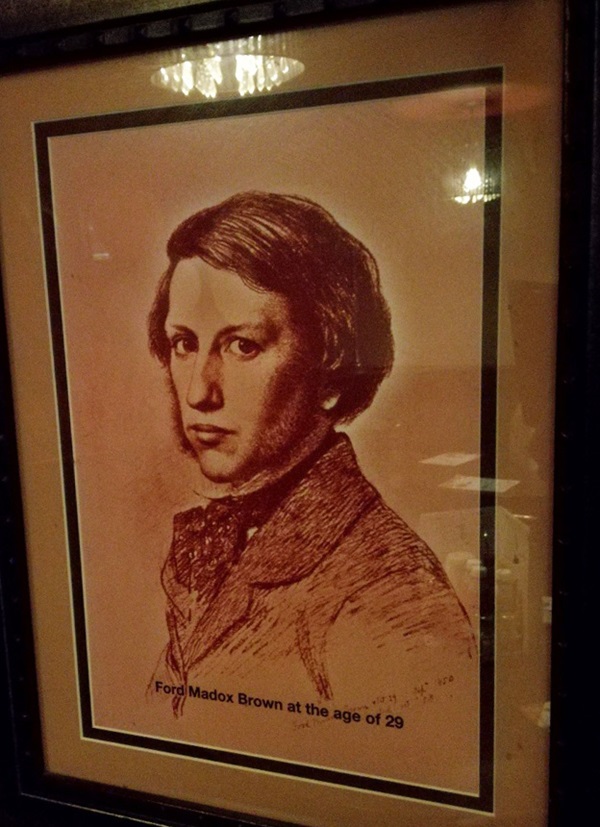
An illustration of Ford Madox Ford, writer grandson of Ford Madox Brown, drawn by Stella Bowen, c1925.
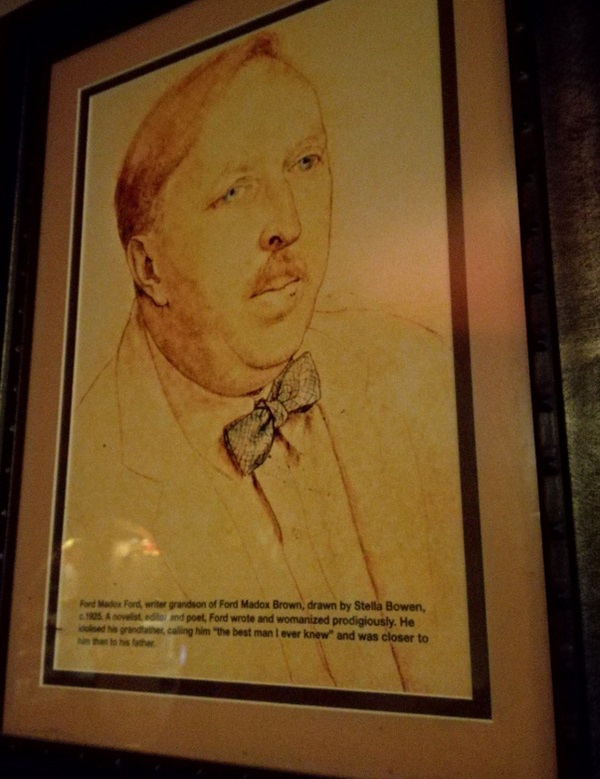
A novelist, editor and poet, Ford wrote and womanized prodigiously. He idolised his grandfather, calling him “the best man I ever knew” and was closer to him than his father.
A photograph, illustrations and text about Sir Joseph Whitworth.
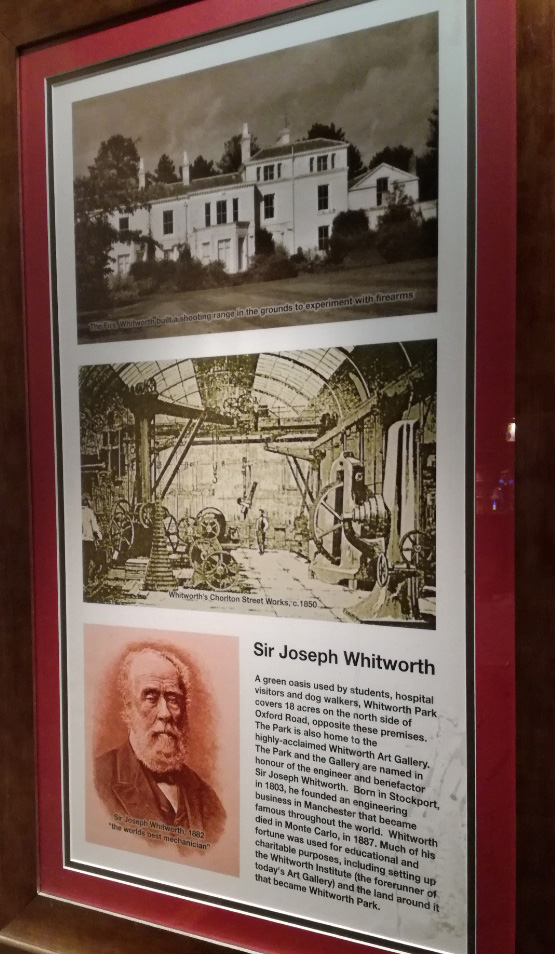
The text reads: A green oasis used by students, hospital visitors and dog walkers, Whitworth Park covers 18 acres on the north side of Oxford Road, opposite these premises. The park is home to the highly-acclaimed Whitworth Art Gallery. The park and gallery are named in the honour of the engineer and benefactor Sir Joseph Whitworth. Born in Stockport, in 1803, he founded an engineering business in Manchester that became famous throughout the world. Whitworth died in Monte Carlo, in 1887. Much of his fortune was used for educational and charitable purposes, including setting up the Whitworth Institute (the forerunner of today’s art gallery) the land around it that became Whitworth Park.
Photographs and text about Emmeline Pankhurst.
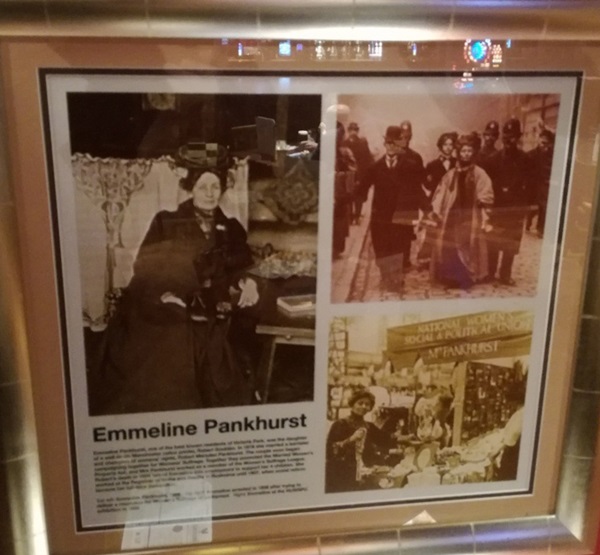
The text reads: Emmeline Pankhurst, one of the best known residents of Victoria Park, was the daughter of a well-to-do Manchester calico printer, Robert Goulden. In 1879 she married a barrister and champion of women’s rights, Robert Marsden Pankhurst. The couple soon began campaigning together for Women’s Suffrage. Together they promoted the Married Women’s Property Act, and Mrs Pankhurst worked as a member of the Women’s Suffrage League. Robert’s death in 1898 forced Emmeline into employment to support her four children. She worked at the Registrar of Births and Deaths in Rusholme until 1907, when social reform became her full-time occupation.
Top left: Emmeline Pankhurst, 1906
Top right: Emmeline arrested in 1908 after trying to deliver a resolution for Women’s Suffrage to parliament
Right: Emmeline at the NUWSPU exhibition in 1908.
Photographs and text about the fight for women’s rights.
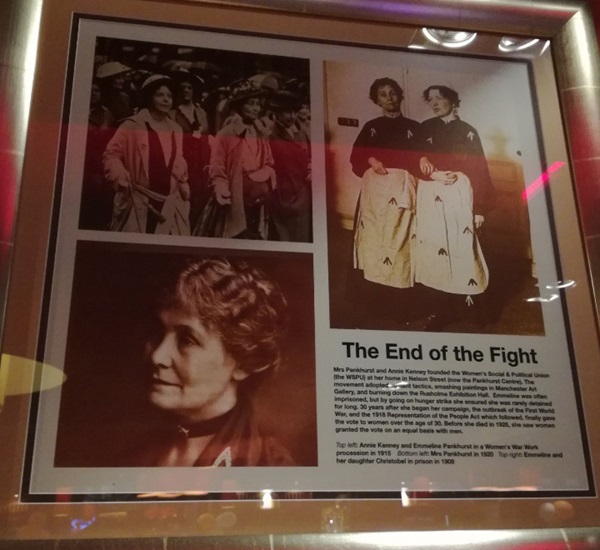
The text reads: Mrs Pankhurst and Annie Kenney founded the Women’s Social & Political Union (the WSPU) and her home in Nelson Street (now the Pankhurst Centre). The movement adopted militant tactics, smashing paintings in Manchester Art Gallery, and burning down the Rusholme Exhibition Hall. Emmeline was often imprisoned, but by going on hunger strike she ensured she was rarely detained for long. 30 years after she began her campaign, the outbreak of the First World War, and the 1918 Representation of the People Act which followed, finally gave the vote to women over the age of 30. Before she died in 1928, she saw women granted the vote on an equal basis with men.
Top left: Annie Kenney and Emmeline Pankhurst in a Women’s War Work procession in 1915
Bottom left: Mrs Pankhurst in 1920
Top right: Emmeline and her daughter Christobel in prison in 1908.
A photograph and text about Ernest Rutherford.
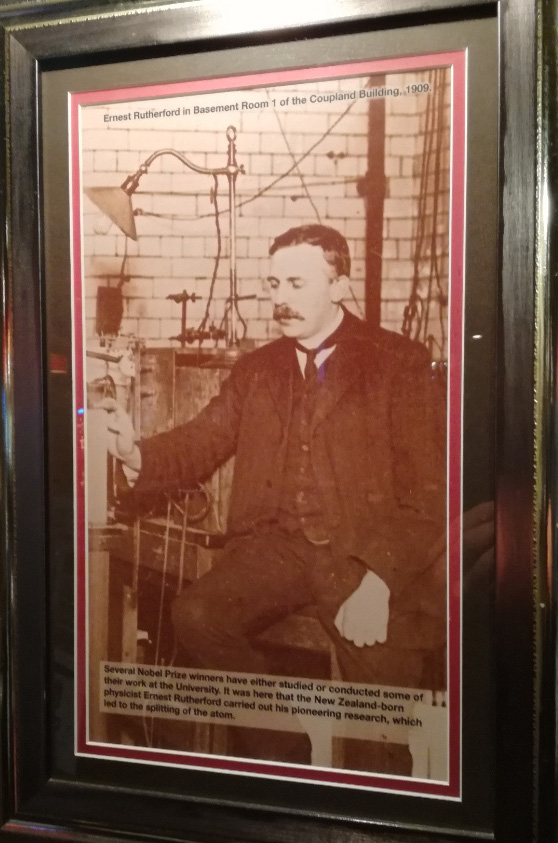
The text reads: Several Nobel Prize winners have either studied or conducted some of their work at the university. It was here that the New Zealand born physicist Ernest Rutherford carried out his pioneering research, which led to the splitting of the atom.
Illustrations and text about the Manors of Rusholme.
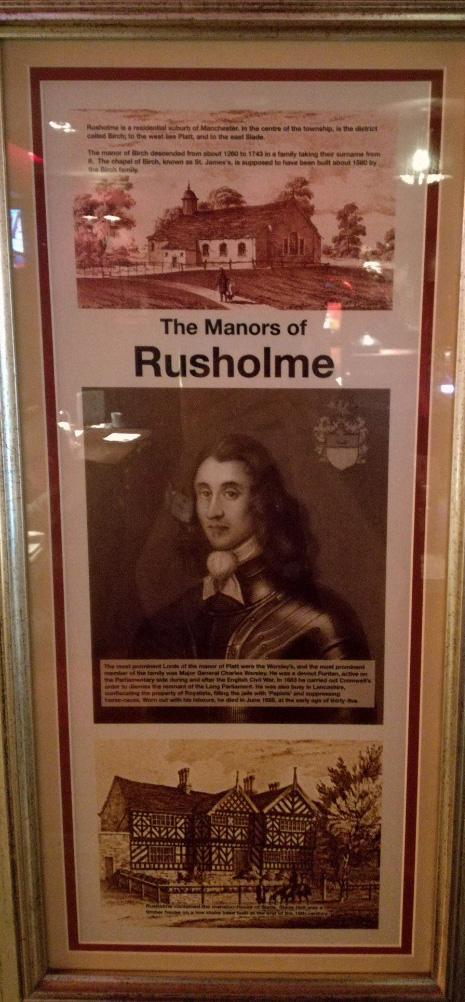
The text reads: Rusholme is a residential suburb of Manchester. In the centre of the township, is the district called Birch; to the west lies Platt, and to the east Slade.
The manor of Birch descended from about 1260 in 1743 in a family taking their surname from it. The chapel of Birch, known as St James’, is supposed to have been built about 1580 by the Birch family.
The most prominent lords of the manor of Platt were the Worseley’s, and the most prominent member of the family was major general Charles Worsley. He was a devote Puritan, active on the Parliamentary side during and after the English Civil War. In 1653 he carried out Cromwell’s order to dismiss the remnant of the Long Parliament. He was also busy in Lancashire, confiscating the property of Royalists, filling the jails with ‘Papists’ and suppressing horse-races. Worn out with his labours, he died in June 1656, at the early age of thirty five.
Photographs and text about LS Lowry.
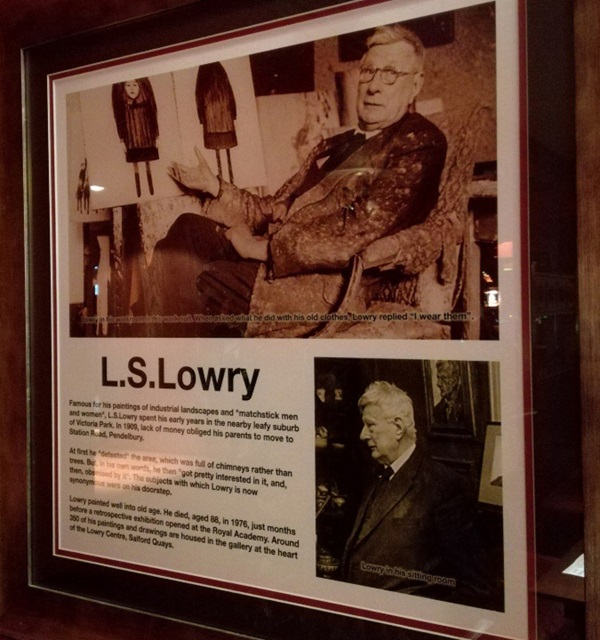
The text reads: Famous for his paintings of industrial landscapes and ‘matchstick men and women’, LS Lowry spent his early years in the nearby leafy suburb of Victoria Park. In 1909, lack of money obliged his parents to move to Station Road, Pendelbury.
At first he “detested” the area, which was full of chimneys rather than trees, but, in his own words, he then “got pretty interested in it, and, then, obsessed by it”. The subjects with which Lowry is now synonymous were on his doorstep.
Lowry painted well into old age. He died, aged 88, in 1976, just months before a retrospective exhibition opened at the Royal Academy. Around 350 of his paintings and drawings are housed in the gallery at the heart of the Lowry Centre, Salford Quays.
External photograph of the building – main entrance.
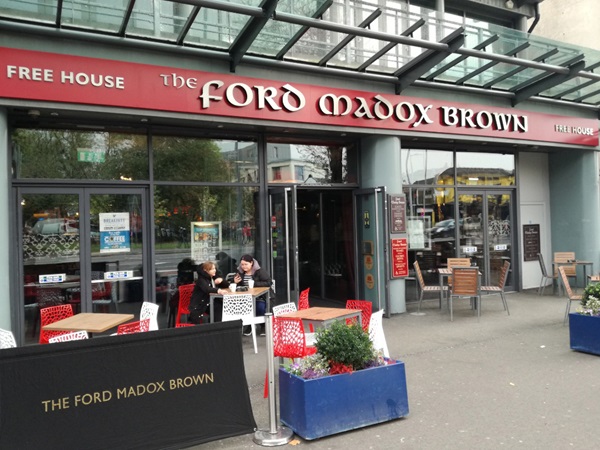
If you have information on the history of this pub, then we’d like you to share it with us. Please e-mail all information to: pubhistories@jdwetherspoon.co.uk